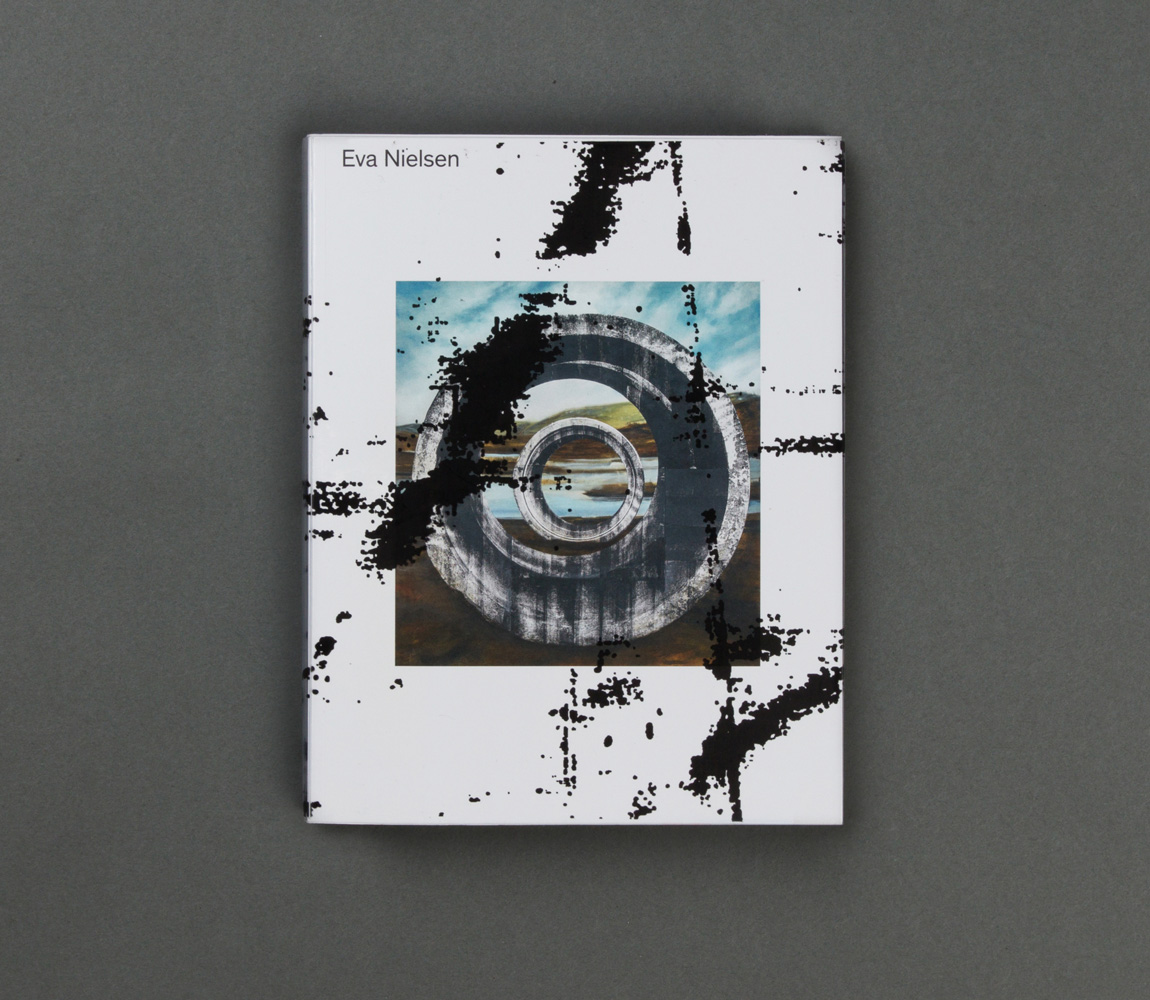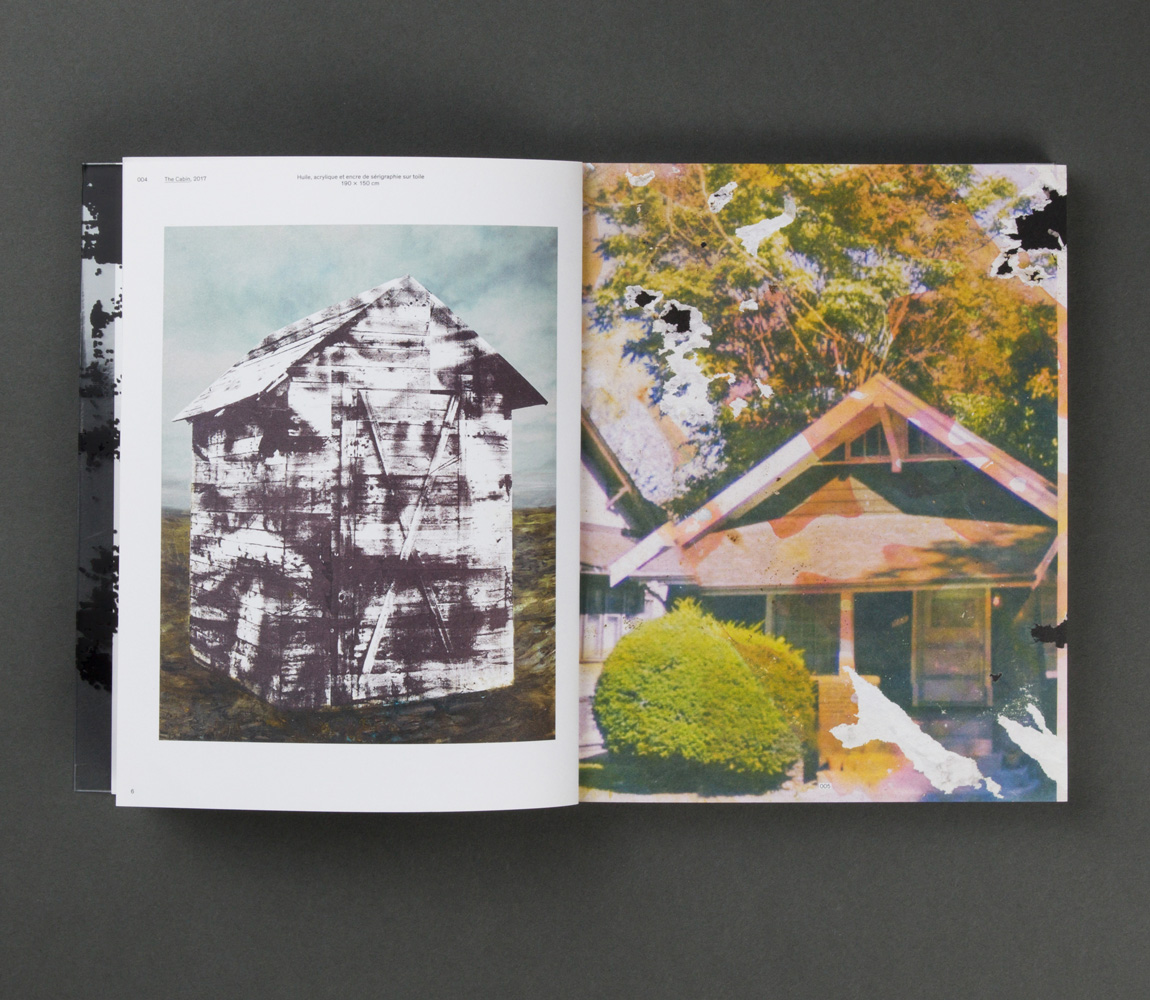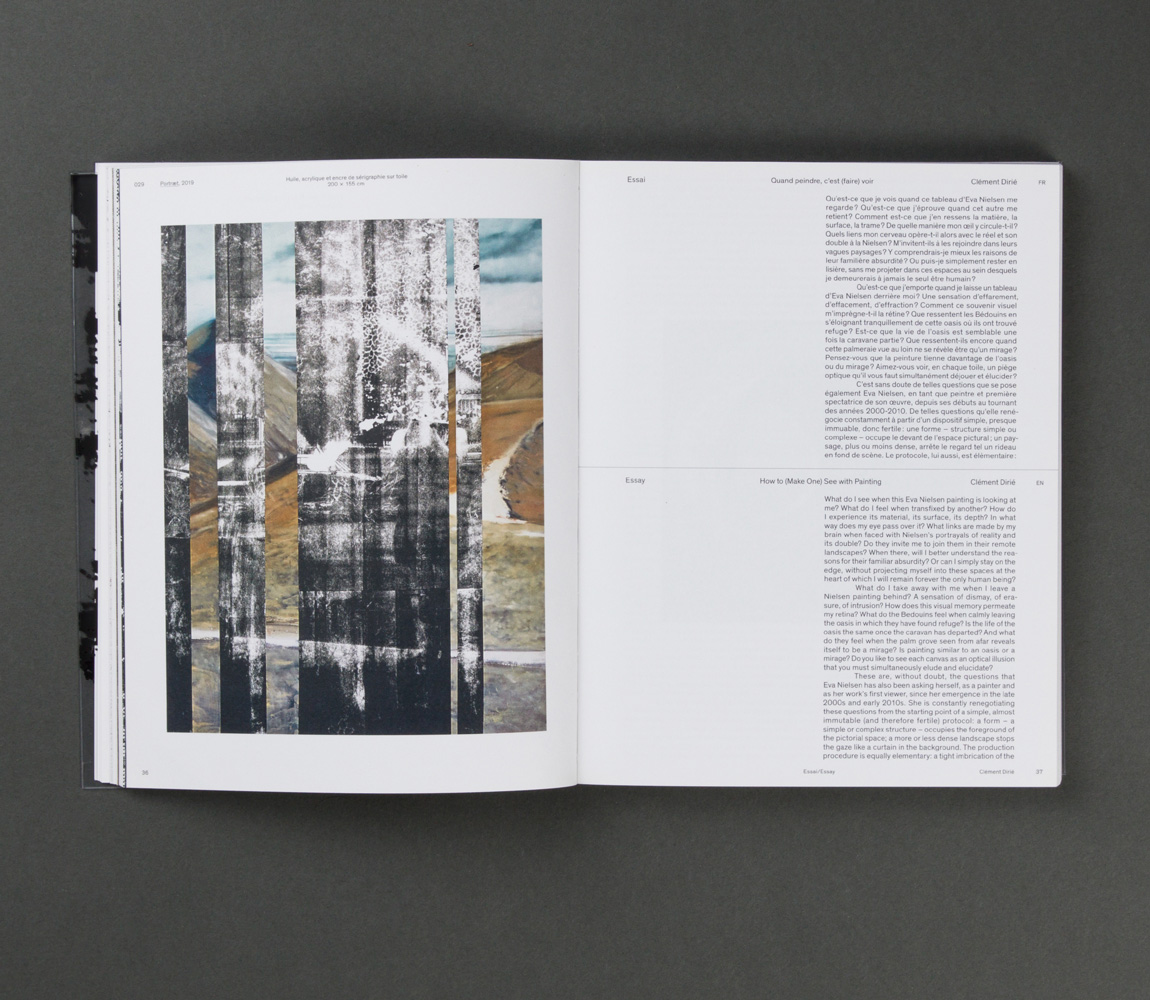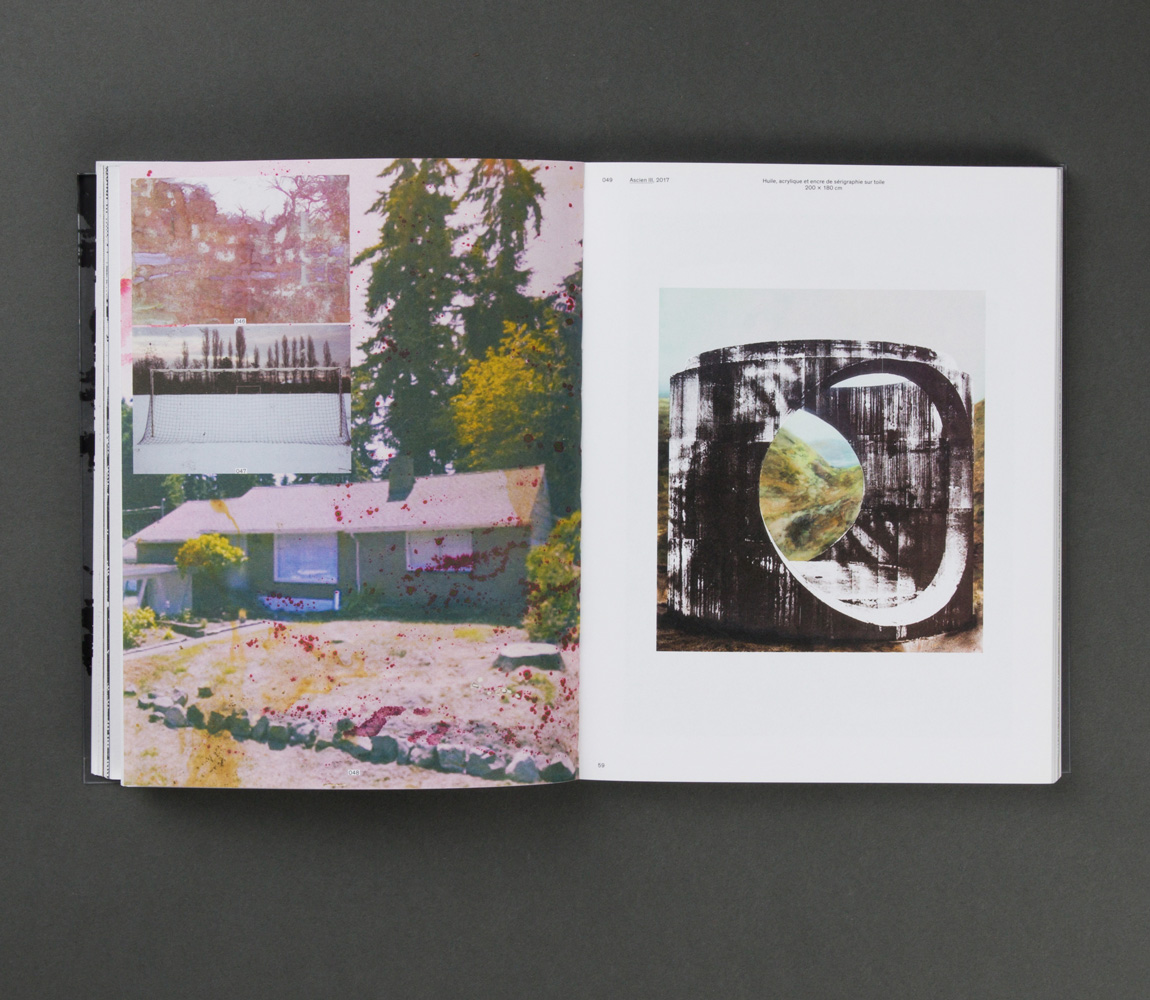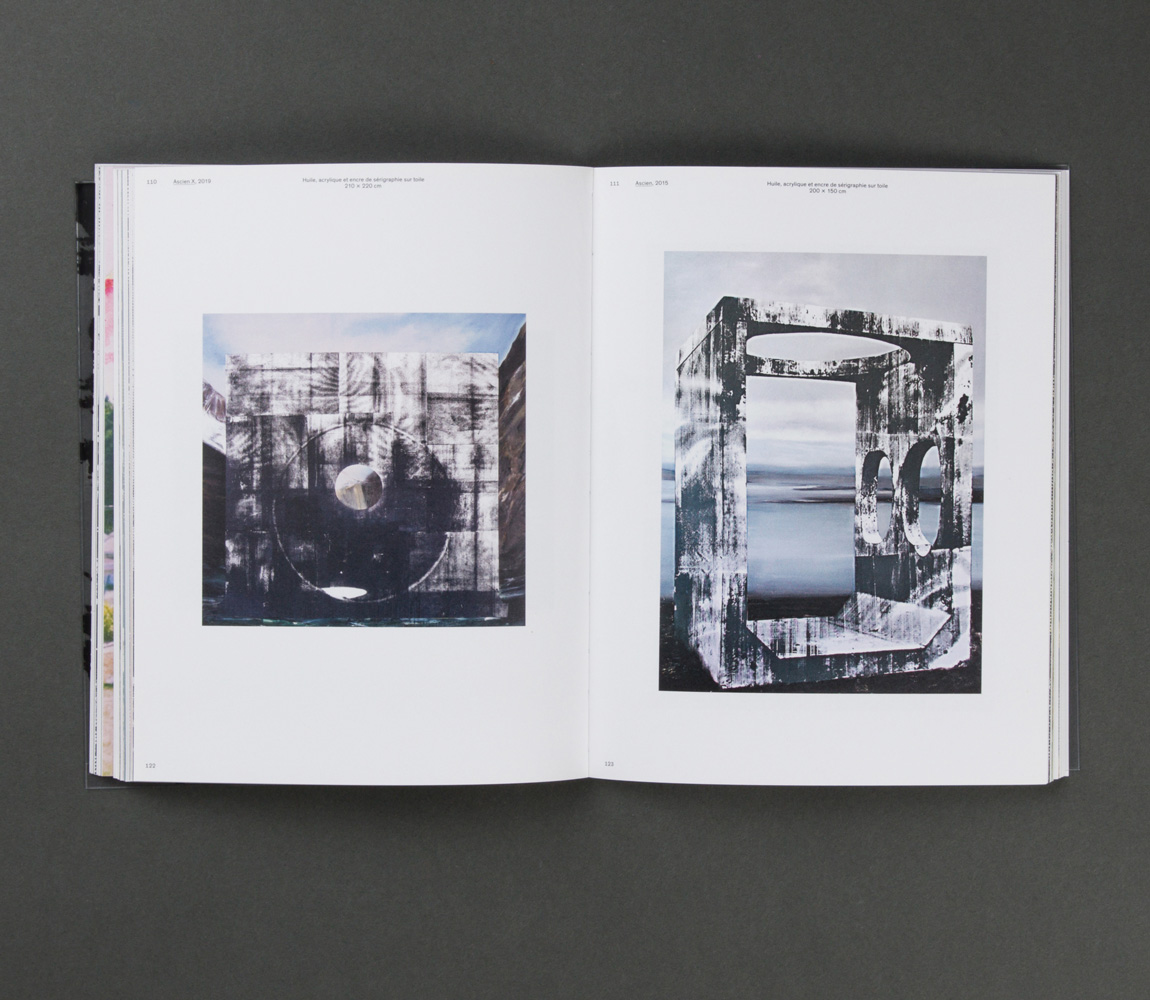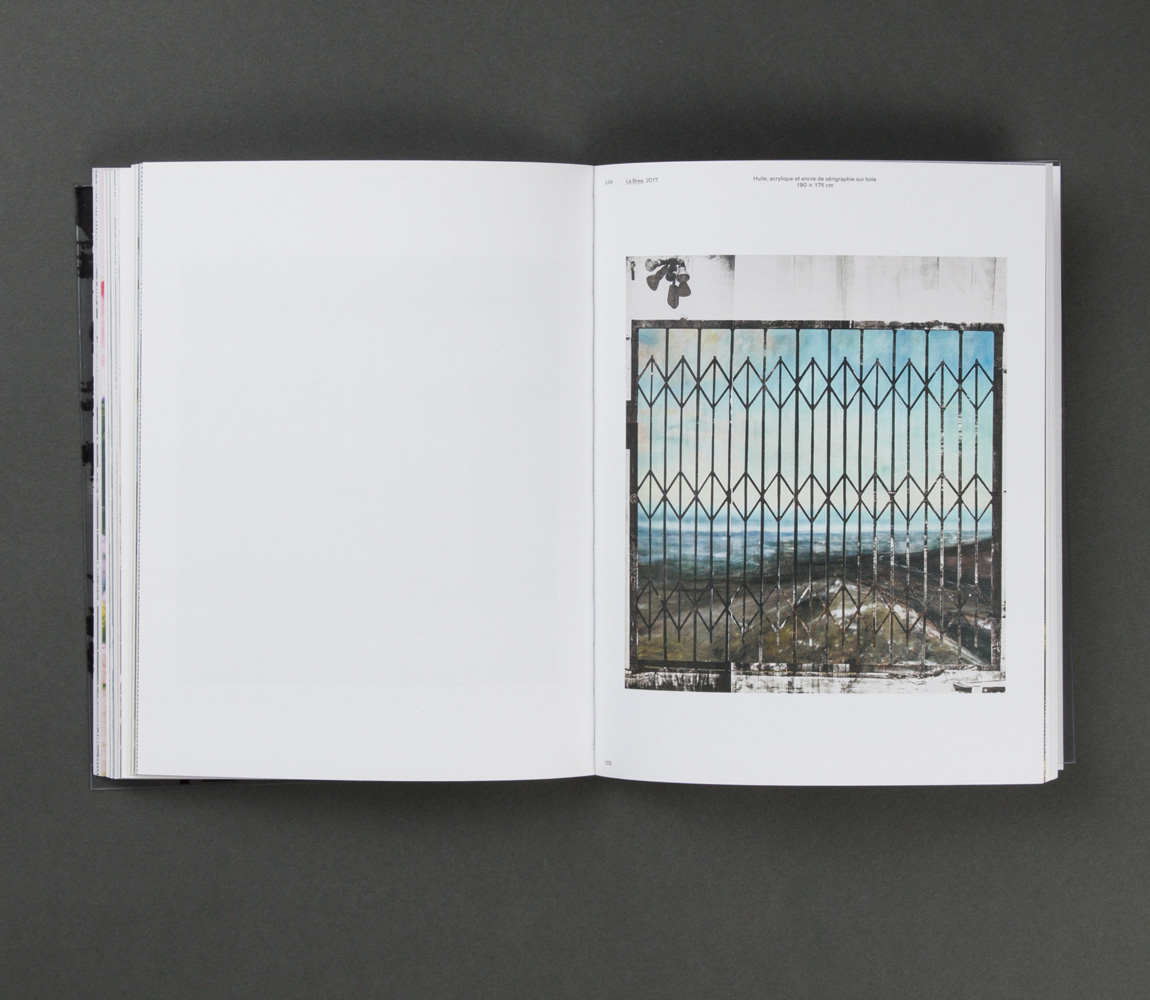Eva Nielsen
« I have always been fascinated by the energy of female painters like Helen Frankenthaler or Joan Mitchell, who seize the painting, physically. Their whole body is engaged in the painting, in its production and the reception of their work on the part of the viewer. The motif of the landscape, in historical painting, the panoramas, were often associated in the history of art with a masculine register. I really like the idea of countering this image of virile possession of the painting, this vision of the “great male painter in his studio”. Painters like Emily Carr, Georgia O’Keeffe or Hilma af Klint have, in my opinion, a strong vision of what a landscape can arouse, both physically and ontologically. I like the fact that they add new dimension to the sublime and the grandiose, a more detached and almost facetious perspective. » (Eva Nielsen, extract from the interview with Joël Riff)
« A work by Eva Nielsen is constantly at the border of something: on the edge of the territory, between centre and periphery, printed image and painting, abstraction and figurative art. From one horizon to another, from composition to subject, it is the landscape that predominates in Nielsen’s paintings and drawings. Inspired both by architecture and by the vestiges of architecture (modernist as much as Utopian), her gaze rests on what seems to be “out of sight” because the places that she transcribes only appear between the interstices of abandoned nature and industrial sites. Acting as topographer, observer or nomad, the artist experiences these changing territories by their expanse as much as by their exploitation. She knows these so-called “intermediary” spaces well, they are those of the Parisian region. Simultaneously personal and fictitious, this cartography has over time been shaped by both her Danish origins and her foothold in the suburbs. So effective is this practice that, oddly, a silent atmosphere unique to Nordic romanticism seems to set in, somewhere between the sublime “tragedy of the landscape” and contemplation through bluish lights, or those made greenish by the unleashing of natural forces.
Her work draws on the power and vigour of these landscapes in order to subtly articulate an organic, even alchemical, relationship between art and nature. In these multiple visions of the landscape, she assembles, reconfigures and harvest fragments of reality, but something always interposes itself like a screen or a filter. In her use of printing, Eva Nielsen, “traces the world” and “spoils” the painting by sublimating it. Representing the alteration of the places that she has roamed or infiltrated, these spaces of reconstruction, real or fake, scramble and disrupt our perceptions. » (excerpt from the text “Suburban Odysseys or Sedimentary Painting” by Marianne Derrien).
« When I studied at Beaux-Arts in Paris, my discovery of screen-printing was a revelation – the word “revelation” has real meaning here, as revelation contains within it its own malleable properties. I was drawn to photography whilst developing a paining practice. Screen-printing possesses infinite possibilities: a multitude of parameters can be changed and the result modifies itself ceaselessly in accordance with its movement. It is at once an imprint, a stencil, a photographic extract. My discovery of this technique is also connected a feeling that I had one day whilst walking: the road, the building, the sky seemed to me particularly flat, as if they’d been cut out. I had a sense of vertiginous flatness. I was suddenly able to explore that feeling through screen-printing, because I could cut around the architectural elements, flatten their volume in the landscape and confront them at the vanishing line. » (Eva Nielsen, extract from the interview with Joël Riff)
